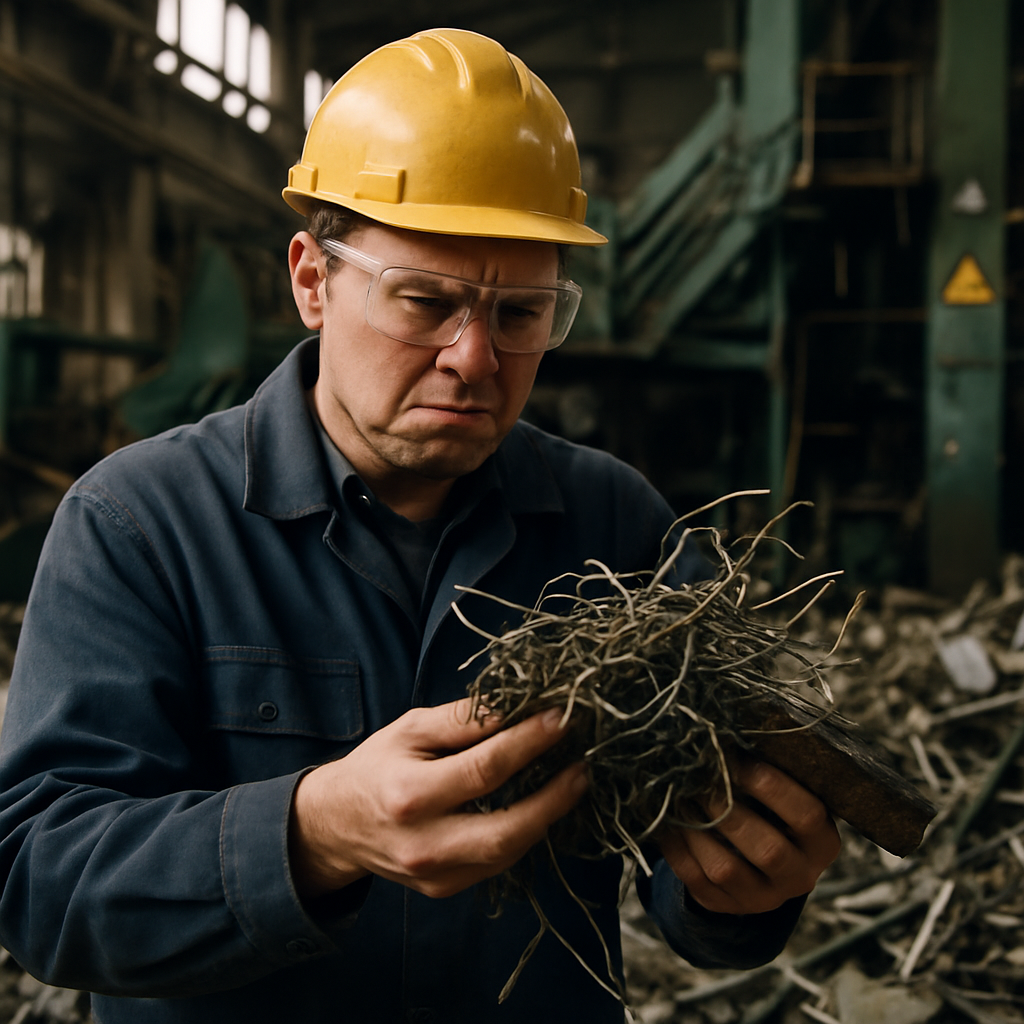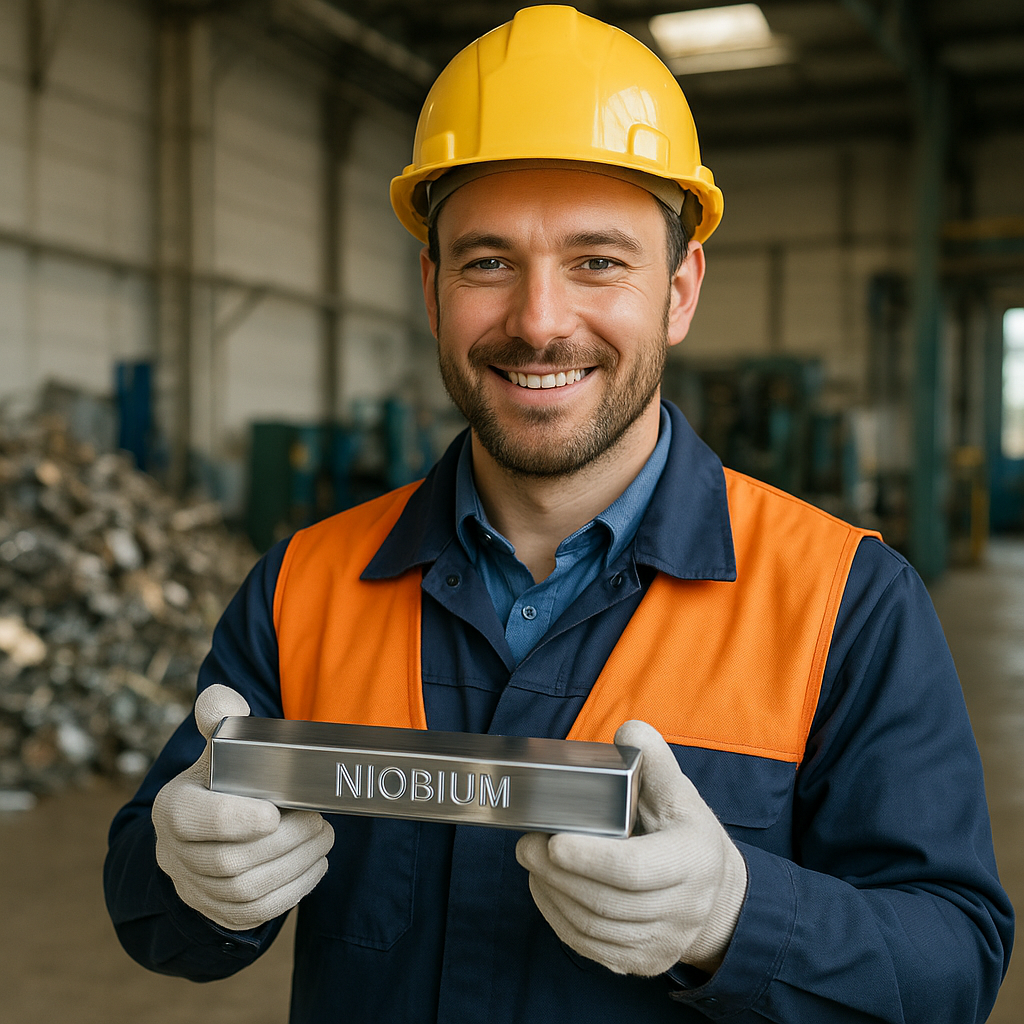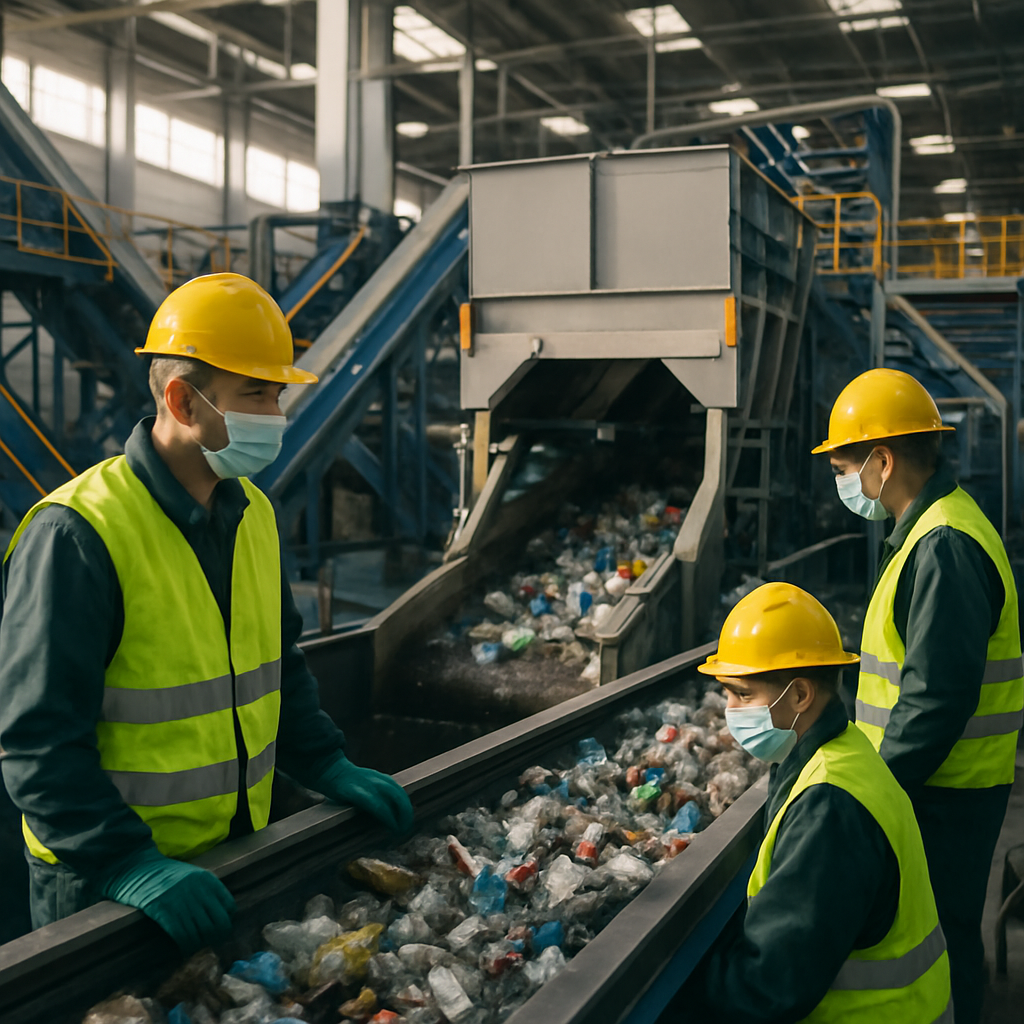5901 Botham Jean Blvd, Dallas, TX 75215
Niobium Recycling: Process, Challenges, and Key Benefits
October 27, 2025Niobium recycling involves the systematic recovery of this valuable metal from end-of-life products and industrial scrap. As a critical material in high-strength steel alloys, superalloys, and superconducting magnets, niobium is essential to modern manufacturing, despite its relatively low concentration in most applications.
The recycling process starts with collecting and sorting niobium-containing materials, typically sourced from high-strength low-alloy steels in automotive parts, superalloys from aerospace components, and medical imaging equipment containing superconducting magnets. Once collected, the materials undergo a series of chemical and metallurgical steps.
The core of niobium recycling involves several technical processes. First, acid leaching breaks down the material to isolate niobium compounds. Next, solvent extraction separates niobium from other elements like tantalum, followed by precipitation to form concentrated niobium compounds, and finally, calcination to produce high-purity niobium oxide.
The environmental benefits are significant—recycling niobium requires about 26% less energy than primary production and results in roughly 18% lower greenhouse gas emissions compared to mining new ore.
What are the Key Steps in Niobium Recycling?
Niobium recycling involves a sophisticated hydrometallurgical process that efficiently recovers this valuable metal from scrap materials. The process consists of five main steps, each playing a critical role in separating niobium from other elements and converting it into usable forms.
The first step is acid leaching, where scrap materials containing niobium are treated with a mixture of hydrofluoric acid (HF) and sulfuric acid (H₂SO₄). This powerful acid combination dissolves the niobium compounds, converting them into soluble fluoride complexes. The leaching process typically achieves extraction yields of around 87% of the niobium present in the original material.
Following acid dissolution, the second step involves solvent extraction using organic extractants such as Cyanex 923 diluted in an appropriate solvent. This extractant selectively binds with niobium ions, pulling them from the aqueous acid solution into an organic phase. This separation technique is remarkably effective, with extraction efficiencies approaching 98% for niobium.
The third step, known as stripping, removes the niobium from the organic phase back into an aqueous solution. This is accomplished using stripping agents like a mixture of ammonium fluoride (NH₄F) and ammonia (NH₃). The process transfers niobium into a purified aqueous solution, separating it from other metals that may have been co-extracted. Stripping efficiencies typically reach 70% or higher.
In the fourth step, precipitation occurs when chemical agents like ammonia are added to the niobium-rich aqueous solution. This causes niobium to form solid precipitates, typically hydrated niobium oxides or other niobium compounds. These precipitates can be filtered from the solution, washed, and collected.
The final step is calcination, where the niobium precipitates are heated to high temperatures (around 1200°C) in a controlled atmosphere. This transforms the precipitates into pure niobium oxide (Nb₂O₅) by removing water and other volatile components. The resulting niobium oxide typically has a purity of 98.5% or higher.
The entire recycling process can achieve overall recovery rates exceeding 85% of the niobium present in the original scrap material. This high efficiency makes recycling an economically viable and environmentally sustainable source of niobium, reducing the need for primary mining while recovering a critical metal for high-tech applications.
[[artifact_table]] Comparison of Niobium Recovery Rates at Different Stages of the Recycling Process [[/artifact_table]]Continued improvements in process chemistry and optimization are gradually increasing these recovery rates, making niobium recycling increasingly competitive with primary production methods. The high purity of recycled niobium oxide makes it suitable for reuse in demanding applications, including special steels, superconductors, and other high-performance materials.
What are the Challenges in Niobium Recycling?

Recycling niobium presents significant technical challenges that require specialized expertise and equipment. These complexities arise due to niobium’s unique metallurgical properties and its presence in sophisticated alloy systems. Understanding these challenges helps explain why the end-of-life recycling rate for niobium remains below 1% despite its classification as a critical mineral.
Key obstacles in the niobium recycling process include:
- Complex Alloy Compositions – Niobium is often found within intricate alloy systems, especially in aerospace applications where it may make up about 5% of nickel-based superalloys. These complex matrices make separation extremely difficult, as niobium forms strong bonds with other metals. Conventional separation methods often fall short in breaking these bonds while preserving the niobium content.
- Stable Compound Formation – Niobium easily forms very stable compounds that resist simple extraction methods. When combined with other elements, it creates polymeric complexes in acidic solutions, complicating traditional recovery processes. This chemical behavior necessitates advanced separation techniques beyond standard recycling approaches.
- High Purity Requirements – Applications using niobium, particularly in superconducting technologies and electronics, require exceptionally high purity levels. Even minor impurities can significantly impact performance properties. The purification process to achieve these standards is technically demanding, requiring specialized methods like electron beam melting or chemical vapor deposition to reach acceptable purity thresholds.
- Hazardous Chemical Dependence – Conventional extraction of niobium heavily relies on highly corrosive and toxic chemicals, particularly hydrofluoric acid (HF). This acid poses serious health risks through both direct contact and inhalation of vapors, necessitating corrosion-resistant equipment and rigorous safety protocols. The process also creates hazardous waste streams that demand careful management and disposal.
- Oxidation Prevention – Niobium is highly susceptible to oxidation at elevated temperatures. During recycling, exposure to air can form a stable oxide layer that compromises yield and quality. Maintaining controlled atmospheres or vacuum conditions throughout the recovery process adds significant complexity and cost to recycling operations.
These technical barriers highlight the need for specialized facilities with advanced capabilities for niobium recycling. Expert recyclers employ electrochemical methods, selective dissolution techniques, and other approaches to overcome these challenges. The complexity also contributes to current research efforts focused on developing alternative, more environmentally friendly methods for niobium recovery while maintaining economic viability.
Recent innovations are exploring fluoride-free processes for niobium recovery, including crystallization techniques at lower temperatures and atmospheric pressure. These advancements may provide more sustainable alternatives to conventional methods while maintaining the high purity levels required for advanced applications.
| Challenge | Technical Solution |
|---|---|
| Complex Alloy Compositions | Advanced separation techniques |
| Stable Compound Formation | Specialized chemical separation methods |
| High Purity Requirements | Electron beam melting, Chemical vapor deposition |
| Hazardous Chemical Dependence | Fluoride-free recovery processes, Managed use of HF |
| Oxidation Prevention | Controlled atmospheres or vacuum conditions |
What are the Benefits of Niobium Recycling?

Recycling niobium is a significant strategy for sustainable resource management amid growing resource constraints. This essential metal, crucial for high-strength steel production and advanced technologies, offers considerable environmental and economic benefits when appropriately recycled.
Resource Conservation
The primary advantage of niobium recycling is the conservation of valuable natural reserves. Despite its widespread use in industries like automotive and aerospace, niobium production is predominantly concentrated in Brazil, which supplies about 90% of the global demand, contributing to a vulnerable supply chain. Recycling helps alleviate the strain on natural resources by maintaining niobium circulation, thus extending the lifespan of these reserves for future use.
The impact is noteworthy. Recycling a ton of niobium removes the necessity to extract new ore, aiding in the preservation of finite and geographically concentrated reserves that suffice for current demands.
Energy Savings
The difference in energy consumption between primary extraction and recycling is substantial. Research shows that niobium recycling can reduce energy use by about 26% compared to primary production. Mining alone consumes approximately 36% of the total energy in the niobium supply chain, involving energy-intensive processes like hydrofluoric acid dissolution and solvent extraction.
Conversely, recycling requires about 19% of the energy used across the entire supply chain. Between 2010 and 2050, niobium recycling could save 133 to 161 million gigajoules of energy globally, decreasing fossil fuel use and energy costs throughout the supply chain.
Environmental Protection
Niobium mining and primary processing have significant environmental impacts, inducing land disruption, potential water pollution, and habitat destruction. The primary production stage contributes around 72% of total greenhouse gas emissions in the niobium supply chain.
Recycling offers a sustainable alternative. Recovering niobium from end-of-life products can lower greenhouse gas emissions by about 18% over four decades compared to primary production. Global forecasts suggest that recycling could prevent 44-53 million tonnes of CO2-equivalent emissions from 2010 to 2050, with major impacts in the USA, EU, China, and Japan.
Economic Opportunities in the Circular Economy
Niobium recycling fosters economic opportunities within the expanding circular economy framework. Recovering and reprocessing niobium creates new revenue streams, supports job creation, and promotes innovation in the recycling industry. As global environmental regulations tighten, companies specializing in niobium recovery can gain competitive advantages.
The automotive industry is particularly promising, with approximately 40 million end-of-life vehicles globally in 2010 alone, providing significant potential for niobium recovery from high-strength automotive steel. This creates a sustainable cycle where materials transition from one application to another, avoiding the traditional linear path to disposal.
Material Efficiency
Niobium’s greatest strength is its ability to retain its properties through recycling. Unlike materials that degrade significantly when recycled, niobium maintains its beneficial attributes, making recycled niobium a cost-effective and technically viable alternative to newly mined material.
In steel recycling, only about 0.05% of niobium is typically lost to oxidation in the slag phase during processing in basic oxygen furnaces or electric arc furnaces. This high retention rate ensures that recycled niobium performs comparably in demanding applications while minimizing waste and maximizing resource efficiency.
| Aspect | Niobium Recycling | Primary Production |
| Energy Consumption | 26% reduction | Higher |
| Greenhouse Gas Emissions | 18% reduction | Higher |
| Environmental Impact | Lower risk of land disruption and habitat destruction | Significant due to mining and processing |
| Material Efficiency | High retention of niobium properties | Not applicable |
Niobium recycling contributes broadly to sustainable development goals by addressing multiple environmental challenges concurrently. It reduces the need for environmentally harmful mining operations, lessens energy consumption and emissions, and establishes more resilient supply chains less vulnerable to geopolitical disruptions. As industries globally adopt more sustainable practices, niobium recycling exemplifies responsible resource management in the metal sector.
Conclusion: The Future of Niobium Recycling

Niobium recycling is crucial for both resource conservation and technological progress. As demand for this versatile metal grows in the aerospace, automotive, and electronics industries, developing sustainable recycling methods is essential. Given that Brazil controls over 85% of global supply, recycling is strategically important to diversify sources and reduce supply chain vulnerabilities.
The environmental benefits of niobium recycling are significant. Studies suggest recycling can lower energy consumption by about 26% and reduce greenhouse gas emissions by 18% compared to primary production. Efficient recycling practices help minimize the environmental impact of mining operations while preserving this essential material for future use in renewable energy, electric vehicles, and advanced electronics. For your niobium recycling needs, contact Okon Recycling at 214-717-4083.
